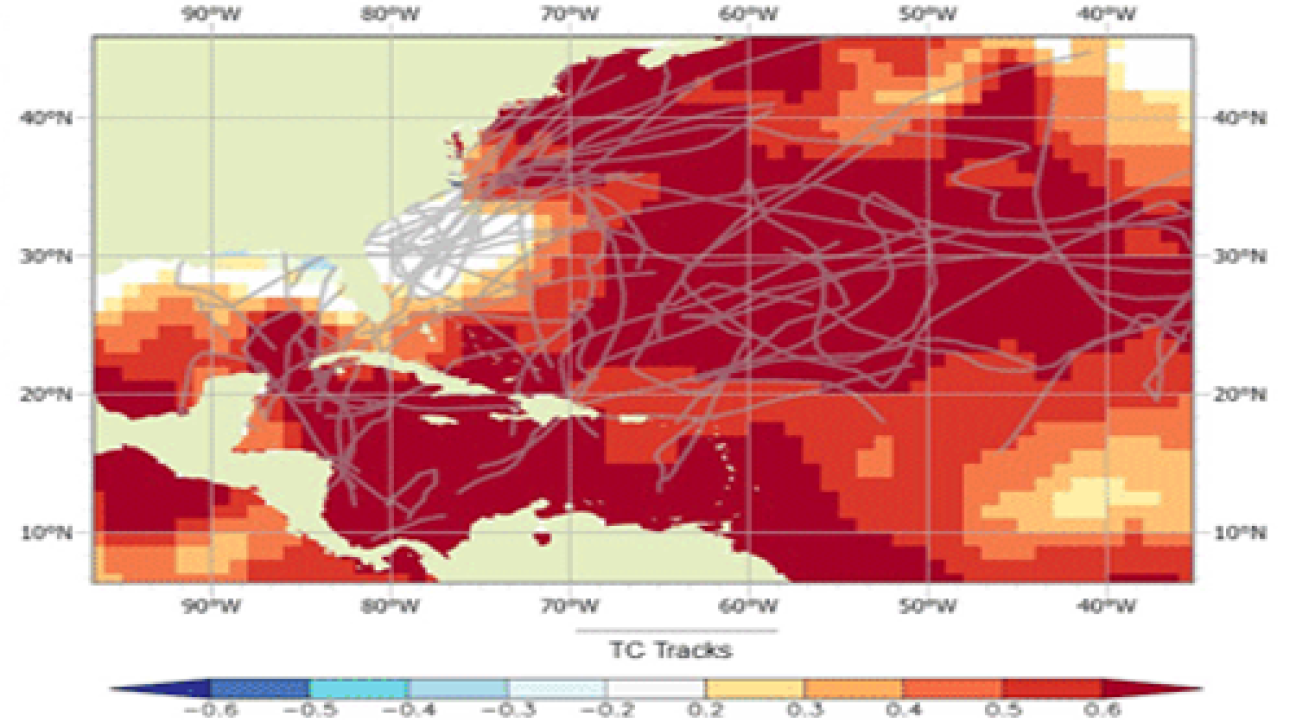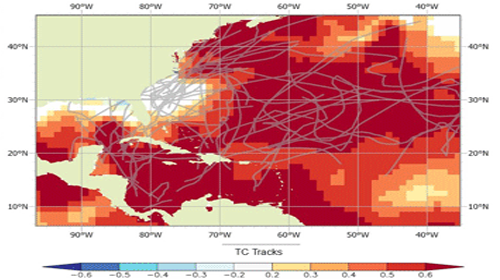Hernández Ayala: Linking off-season tropical cyclone frequency to climate change
Hernández Ayala, J. J. and Méndez-Tejeda, R.: 2020. Increasing frequency in off-season tropical cyclones and its relation to climate variability and change, Weather Clim. Dynam., 1, 745–757, https://doi.org/10.5194/wcd-1-745-2020
This article analyzes the relationship between off-season tropical cyclone (TC) frequency and climate variability and change for the Pacific Ocean and Atlantic Ocean basins. TC track data were used to extract the off-season storms for the 1900–2019 period. TC counts were aggregated by decade, and the number of storms for the first 6 decades (presatellite era) was adjusted. Mann–Kendall nonparametric tests were used to identify trends in decadal TC counts and multiple linear regression (MLR) models were used to test if climatic variability or climate change factors explained the trends in off-season storms. MLR stepwise procedures were implemented to identify the climate variability and change factors that explained most of the variability in off-season TC frequency. A total of 713 TCs were identified as occurring earlier or later than their peak seasons, most during the month of May and in the West Pacific and South Pacific basins. The East Pacific (EP), North Atlantic (NA) and West Pacific (WP) basins exhibit significant increasing trends in decadal off-season TC frequency. MLR results show that trends in sea surface temperature, global mean surface temperature and cloud cover explain most of the increasing trend in decadal off-season TC counts in the EP, NA and WP basins. Stepwise MLR results also identified climate change variables as the dominant forces behind increasing trends in off-season TC decadal counts, yet they also showed that climate variability factors like El Niño–Southern Oscillation, the Atlantic Multidecadal Oscillation and the Interdecadal Pacific Oscillation also account for a portion of the variability



